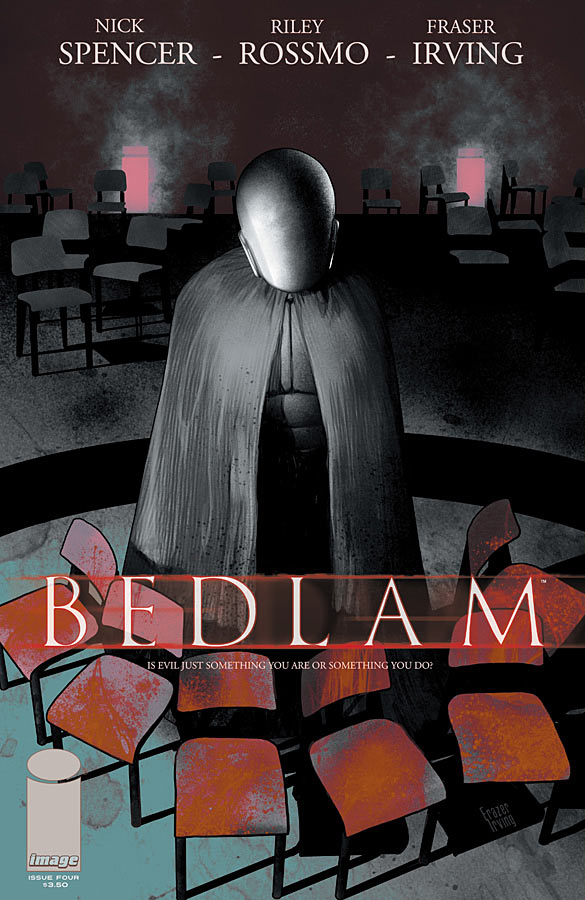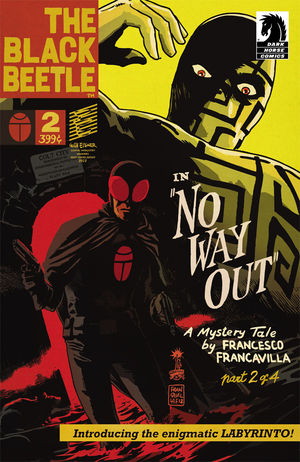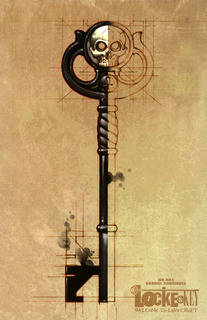written by Neil Gaiman
Originally published as Sandman #1-75 from January 1989 to March 1996 under DC (through #46) and subsequently under the newly launched Vertigo imprint, under which it became one of their most popular and most enduring titles.
Trade Paperbacks:
1. Preludes and Nocturnes (ISBN 978-1563890116): Collects #1-8 2. The Doll's House (ISBN 978-0930289591): Collects #9-16
3. Dream Country (ISBN 978-1563890161): Collects #17-20
4. Season of Mists (ISBN 978-1563890413): Collects #21-28
5. A Game of You (ISBN 978-1563890895): Collects #32-37
6. Fables and Reflections (ISBN 978-1563891052): Collects #29-31, 38-40, 50, "The Song of Orpheus" from Sandman Special #1, "Fear of Falling" from Vertigo Preview #1
7. Brief Lives (ISBN 978-1852865771): Collects #41-49
8. Worlds' End (ISBN 978-1563891700): Collects #51-56
9. The Kindly Ones (ISBN 978-1563892059): Collects #57-69, Vertigo Jam #1
10. The Wake (ISBN 978-1563892790): Collects #70-75
These editions are currently—and very likely permanently—out of print. They have been subsequently replaced by the "New Editions" (see below). Following the series' conclusion in 1996, Gaiman returned to the Sandman universe in two illustrated prose volumes published separately from the TPB collections. The first, from 1999, was a novella illustrated by Yoshitaka Amano called The Dream Hunters (ISBN 978-1563896293; hardcover ISBN 978-1563896739), an entirely fabricated Japanese folktale in which Morpheus is a key figure. In 2008-2009, it was adapted into a four-part mini-series by P. Craig Russell (ISBN 978-1401224288), also available in a hardcover edition (ISBN 978-1401224240). The second, from 2003, was Endless Nights (ISBN 978-1401201135), a collection of stories, each featuring one of the Endless siblings. In addition, Gaiman edited, though did not contribute to, a 1996 collection—from Harper publishing—of short fiction by popular sci-fi, fantasy and horror authors inspired by the Sandman universe and characters, entitled The Sandman: Book of Dreams (currently only available as a mass market paperback, ISBN 978-0380817702, though previously in hardcover—ISBN 978-0061008337—and paperback—ISBN 978-0061053542).
Absolute Editions:
As part of DC's Absolute series, which re-releases collections of their most historically popular titles under DC, Wildstorm, and Vertigo, these prestige editions are beautiful, if incredibly expensive, archival volumes. Bound in fine hardcover with a sturdy slipcover, featuring new artwork by series cover artist and frequent Gaiman collaborator Dave McKean, the Absolute editions present the same texts produced elsewhere in an enlarged (8''x12'') format, with re-colored (issues #1-18, shown below) and re-mastered illustrations. Unlike the TPBs, which collect most of the one-shots under Fables and Reflections, the Absolute editions reproduce the issues in their order of release. As a rule, they also include copious supplementary material on the series' creation and production, though these extras are of considerably variable interest and quality.
 |
| original coloring (left); re-colored (right) |
1. Absolute Sandman, Volume 1 (ISBN 978-1401210823; MSRP $99.99): Collects #1-20. Of all the Absolute Sandman editions, Volume 1 includes the best additional material: the complete original series proposal, several early character sketches of his characters by Gaiman himself and other artists, and the script for #19, "A Midsummer Night's Dream," winner of the World Fantasy Award for Best Short Fiction in 1991, the first comic to do so in this category.
2. Absolute Sandman, Volume 2 (ISBN 978-1401210830; MSRP $99.99): Collects #21-39. Extras include two newly reprinted stories by Gaiman (one prose and the other illustrated), a newly reprinted one-shot Sandman: A Gallery of Dreams, and the script to Chapter Two of Season of Mists.
3. Absolute Sandman, Volume 3 (ISBN 978-1401210847: MSRP $99.99): Collects #40-56, "Fear of Falling" from Vertigo Preview #1, and "The Song of Orpheus" from Sandman Special #1. Additional material also collects Desire's story from Vertigo: Winter's Edge #3, The Endless Gallery #1, the script for #50, and a detailed section on Sandman-related merchandise.
4. Absolute Sandman, Volume 4 (ISBN 978-1401210854; MSRP $99.99): Collects #57-75, Vertigo Jam #1.
5. Absolute Sandman, Volume 5 (ISBN 978-1401232023; MSRP $99.99): Collects The Sandman: Endless Nights, The Dream Hunters (both the prose novella with illustrations and the comic adaptation by Russell), Sandman Midnight Theatre.
Annotated Editions:
In January of 2012, Vertigo began releasing annotated volumes of Sandman. Leslie S. Klinger, annotator of Norton's Sherlock Holmes and Dracula volumes and friend of Gaiman, has been delegated the task. Working with Gaiman's original Sandman scripts, he identifies references both from within and outside the DC universe. These hardcover, black-and-white editions reprint the larger format inked illustrations with marginal notes, rendering the full edition 12''x12''. Annotations are comprehensive, designed as much for critical analysis as leisure reading, much like Klinger's Sherlock Holmes editions, and as such are ideally suitable for readers already comfortable with Sandman's literary and comic roots, even if they somewhat pedantically reiterate some of its more obvious allusions. Critical and fan reception to these volumes consequently has been mixed, though most agree the project itself is a worthy undertaking. Although, to date, only two have been released, according to a 2010 press release Vertigo plans a total of four annotated volumes. (Edit: As of the final release date in December 2015, all four volumes have been completed and released.)1. Annotated Sandman, Volume 1 (ISBN 978-1401233327; MSRP $49.99): Collects #1-20
2. Annotated Sandman, Volume 2 (ISBN 978-1401235666; MSRP $49.99): Collects #21-39
3. Annotated Sandman, Volume 3 (ISBN 978-1401241025; MSRP $49.99): Collects #40-56, Sandman Special #1, "How They Met Themselves" from Vertigo: Winter's Edge #3
4. Annotated Sandman, Volume 4 (ISBN 978-1401243227; MSRP $49.99): Collects #57-75
New Trade Paperbacks:
1. Preludes and Nocturnes (ISBN 978-1401225759; MSRP $19.99): Collects #1-8
2. The Doll's House (ISBN 978-1401227999; MSRP $19.99): Collects #9-16
3. Dream Country (ISBN 978-1401229351; MSRP $14.99): Collects #17-20
4. Season of Mists (ISBN 978-1401230425; MSRP $19.99): Collects #21-28
5. A Game of You (ISBN 978-1401230432; MSRP $19.99): Collects #32-37
6. Fables and Reflections (ISBN 978-1401231231; MSRP $19.99): Collects #29-31, 38-40, 50, "The Song of Orpheus" from Sandman Special #1, "Fear of Falling" from Vertigo Preview #1
7. Brief Lives (ISBN 978-1401232634; MSRP $19.99): Collects #41-49
8. Worlds' End (ISBN 978-1401234027; MSRP $19.99): Collects #51-56
9. The Kindly Ones (ISBN 978-1401235451; MSRP $19.99): Collects #57-69, Vertigo Jam #1
10. The Wake (ISBN 9781401237547; MSRP $19.99): Collects #70-75
Omnibus Editions:
In addition to the Absolute series and the newly remastered TPB collection, Vertigo has also packaged the series in two volumes of the Sandman Omnibus, a more economical, if incredibly unwieldy, hardcover alternative to the prestige Absolute editions. These volumes are roughly equivalent to DC/Vertigo's deluxe editions. Like the Absolute editions and new TPBs, the Omnibus will include the new coloring on the first eighteen issues. Unlike the TPBs it will include a slightly enlarged page format, but unlike the Absolute editions, it will not include much additional material.1. Sandman Omnibus, Volume 1 (ISBN 978-1401241889; MSRP $150.00): Collects #1-37, Sandman Special #1
2. Sandman Omnibus, Volume 2 (ISBN 978-1401243142; MSRP $150.00): Collects #38-75, Vertigo Jam #1, and Vertigo: Winter's Edge #3
Electronic Editions:
Currently, all individual issues and standard collected volumes are available on electronic platforms, such as the Amazon Kindle store (original run TPBs retail for $9.99, individual issues not recommended) and Comixology (original run TPBs retail for $12.99, individual issues for $1.99) among others, though it is advised you check availability of the full collection from your preferred retailer before purchasing any of the volumes or, especially, single issues. Supplementary features and special editions are not available electronically.
Addendum: Death Editions
During Sandman's initial run, Gaiman also wrote two three-issue limited series featuring Dream's surprisingly pleasant sister Death, both published under Vertigo and subsequently released in TPBs: Death: The High Cost of Living (from 1993; ISBN 978-1563891335) and Death: The Time of Your Life (from 1996; ISBN 978-1563893339). These editions are, however, periodically unavailable, and have been replaced by more popular collected editions of Death's appearances.
Absolute Death (ISBN 978-1401224639; MSRP $99.99): Collects Death: The High Cost of Living #1-3; Death: The Time of Your Life #1-3; Sandman #8 "The Sound of Her Wings" and #20 "Façade"; "Death and Venice" from Endless Nights; stories "A Winter's Tale" and "The Wheel"; and the AIDS awareness pamphlet "Death Talks About Life". This edition is designed to match the rest of the Absolute library, including an enlarged format and archival quality print, a fine leather binding and a hard slipcover. It also includes a number of extras, such as a larger character gallery and Gaiman's script for Sandman #8, Death's first appearance in comics.
Death Deluxe Edition (ISBN 978-1401235482; MSRP $29.99): Collects Death: The High Cost of Living #1-3; Death: The Time of Your Life #1-3; Sandman #8 "The Sound of Her Wings" and #20 "Façade"; "Death and Venice" from Endless Nights; stories "A Winter's Tale" and "The Wheel"; and the AIDS awareness pamphlet "Death Talks About Life". The Deluxe edition includes in a hardcover binding all the same primary material as the Absolute volume with a significantly smaller price tag.
Addendum: Sandman: Overture Editions
 |
| The Sandman: Overture #2, cover by Dave McKean |
The Sandman: Overture (ISBN 978-1401265199; MSRP $19.99): Collects The Sandman: Overture #1-6.
The Sandman: Overture Deluxe Edition (ISBN 978-1401248963; MSRP $24.99): Collects The Sandman: Overture #1-6. Unlike some other deluxe editions from Vertigo, this one doesn't seem to contain any additional supplemental content, no more than the paperback version. It differs only in having a hardcover binding.
*UPDATED June 10, 2017









